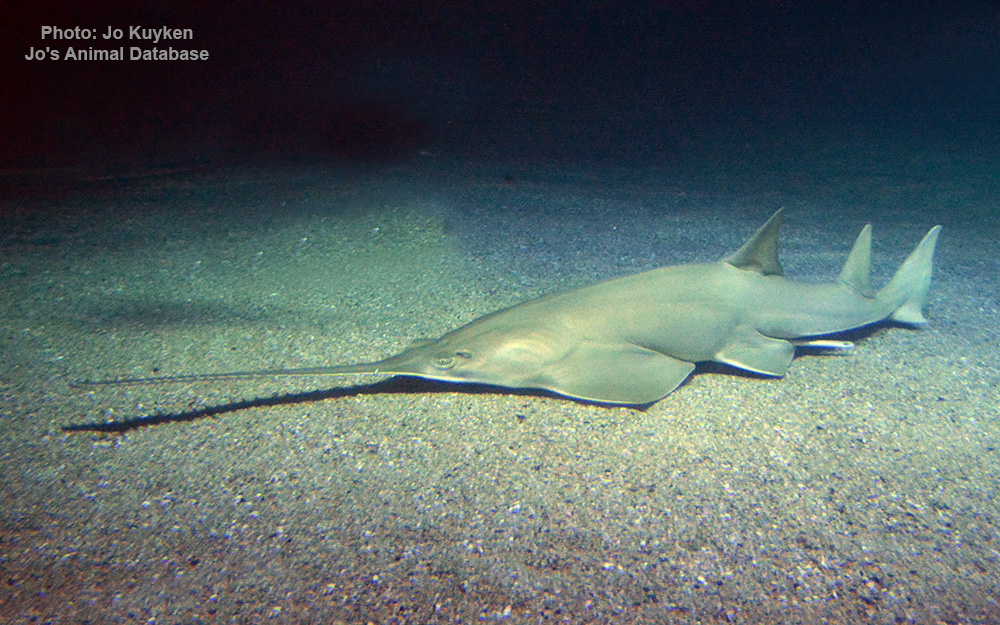Green sawfish
(Pristis zijsron)

Image source: Jo's Animal Database
Classification
General data
The longcomb sawfish is possibly the largest species of sawfish, reaching a total length of up to 7.3 m (24 ft), but rarely more than 6 m (20 ft) today. Its upperparts are greenish-brown to olive, while the underparts are whitish.
A combination of characters are necessary to distinguish it from the other sawfish species: the longcomb sawfish has teeth to near the base of the rostrum or saw (unlike the knifetooth sawfish, Anoxypristis cuspidata), 23–37 teeth on each side of the rostrum (18–24 in the dwarf sawfish, P. clavata, 20–32 in smalltooth sawfish, P. pectinata, and 14–24 in largetooth sawfish, P. pristis), the teeth towards the tip of the rostrum are clearly closer to each other than those at its base (unlike the dwarf, smalltooth and largetooth sawfish where either equally spaced or only marginally closer to each other towards the tip of the rostrum), a relatively narrow rostrum, width equalling 9–17% of its length (typically wider in dwarf and largetooth sawfish), a rostrum that is 23–33% of the total length of the fish (20–25% in dwarf sawfish), relatively short pectoral fins (unlike the knifetooth and largetooth sawfish), a leading edge of the dorsal fin that is located clearly behind the leading edge of the pelvic fins (in front of in largetooth sawfish and roughly above in smalltooth sawfish) and it has a very small or no lower tail lobe (present in knifetooth and largetooth sawfish).
It can be further separated from the two most similar species, the dwarf and smalltooth sawfish, by the considerably smaller maximum size of the former species, and the less greenish colour (when alive/recently dead) and essentially Atlantic distribution of the latter species.
The smalltooth and longcomb sawfish might historically have come into contact in South Africa, but sawfish appear to have been extirpated from this country.
The longcomb sawfish is native to tropical and subtropical waters in the western and central Indo-Pacific. Historically its distribution covered almost 5,900,000 km2 (2,300,000 sq mi) and it ranged from South Africa, north to the Red Sea and Persian Gulf, east to the South China Sea, through Southeast Asia to Australia.
In Australia, it ranged from Shark Bay, along the northern part of the country, and south to Jervis Bay on the eastern coast.. Today it has disappeared from much of its historical range. It can live in colder waters than its relatives, as also evidenced by the range in Australia where it occurs further south than the other species of sawfish.
The longcomb sawfish is mainly found in coastal marine, mangrove and estuarine habitats, even in very shallow waters, but can also occur far offshore to a depth of more than 70 m (230 ft). There are records from rivers far inland, but it is not frequent in freshwater. It is mainly found in places with a bottom consisting of sand, mud or silt.











